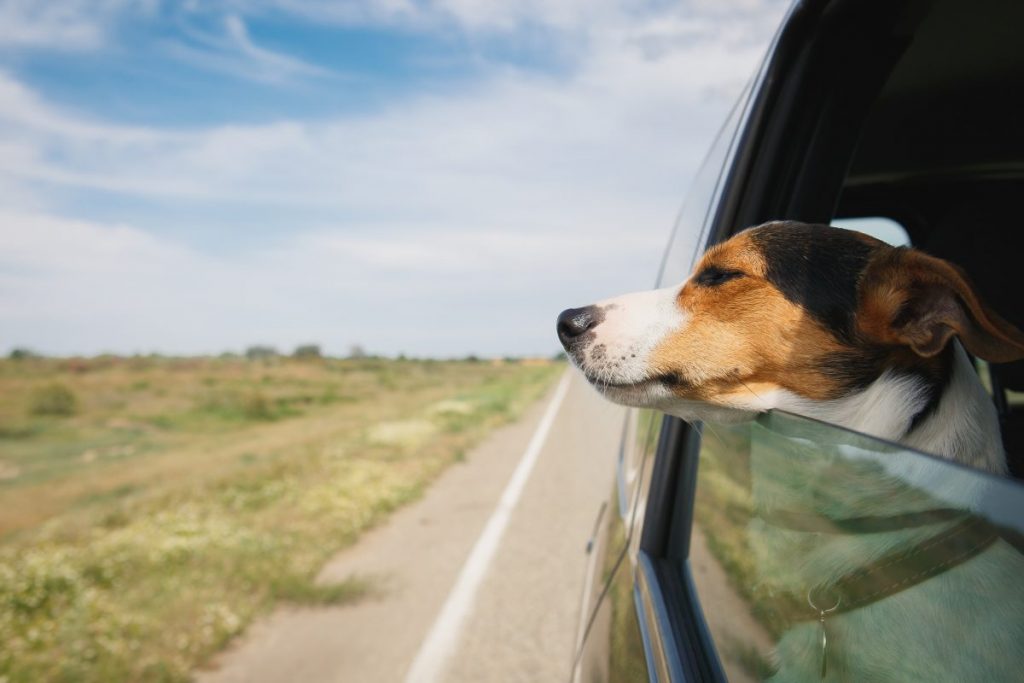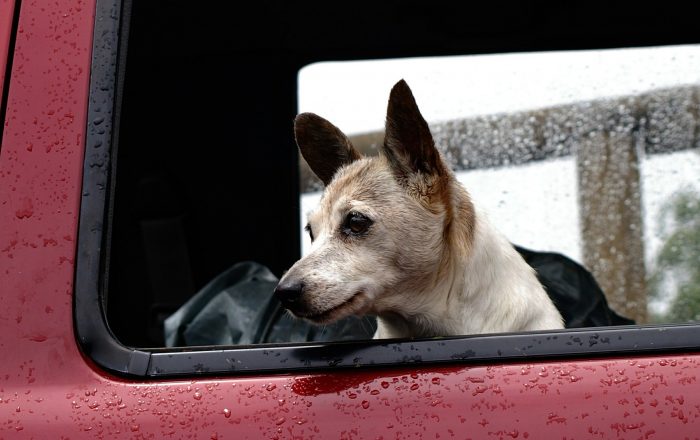Have you seen all those commercials with the happy dog riding in the passenger seat, ears flying out the window?
That’s why every dog owner assumes their pooch loves riding in the car. But what if your dog is less than thrilled when it’s time to hit the road?
If the mention of taking a car ride makes you and your pet uneasy, your dog may have a problem with motion sickness.
Motion Sickness in Animals
Just like some people get queasy in cars, boats, and airplanes, dogs can experience motion sickness too.
It’s more common in puppies, since many times motion sickness is a balance issue due to a lack of development in the inner ear. The good news about this type means that your dog will outgrow it as they get older.
If your dog’s motion sickness is due to stress, chances are they won’t grow out of it. But there are things you can do to help make the car a less stressful environment.
Symptoms of Motion Sickness in Dogs
Vomiting is not the only symptom associated with motion sickness in dogs. Other symptoms include:
- Fear of cars
- Excessive drooling
- Whining
- Yawning
- Inactivity or listlessness
Causes of Canine Motion Sickness
In puppies and young dogs, motion sickness can be a balance issue. While their inner ears are still developing, motion sickness can occur because of the lack of equilibrium.
While some dogs will grow out of motion sickness, most get sick due to stress. This can be harder to deal with because your pet associates riding in the car with getting sick.
Diagnosis of Motion Sickness in Dogs
There’s no medical diagnostic test that can definitively tell your vet if your dog has motion sickness. But after answering a few questions, it will be apparent that your dog does have motion sickness.
Canine Motion Sickness Treatment
After your dog rides in the car a few times and gets sick or nauseous, they will permanently associate riding in the car with being sick. Here are some suggestions to help your dog get comfortable in motion:
Start with Short Trips
Pick a fun location for your pet that’s close to home, like a dog park. Make sure it’s no more than a ten-minute drive. Bring someone with you to sit with your pet and keep him calm. Once you arrive, play with your dog and do everything you can to make the visit extra enjoyable. Have your dog’s riding partner keep the pooch calm on the way home.
After arriving home, play with your dog again, allow rest, and then reward him with treats. Repeat this a couple of times, and your dog will begin to associate going out for a ride with a good time.
Keep Them Hungry
Dogs don’t get carsick on an empty stomach. If you can, don’t drive your pet around for a few hours after eating.
Make Plenty of Pit Stops
If your dog can’t handle long trips, make frequent stops and reward your dog for tolerating the long ride.
Get Some Special Equipment
Buy your canine a special toy for them to play with only when traveling in the car. If you want to get a little fancier, special seat belts and car seats allow your dog to remain firmly in place and check out all the scenery while riding along.
Riding in the car doesn’t have to be a harrowing experience for your dog. With a little patience, a couple of adjustments and a lot of love, your dog is well on their way to becoming a better riding partner. Just remember that it will take time to change your dog’s habits, especially in older dogs. Keep rewarding them every time they do well. Happy riding!






